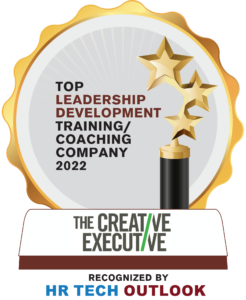Reframing Labor Hoarding
The term “Labor Hoarding” is everywhere in business and economic news. Sounds ominous, right? In its simplest terms, labor hoarding means not doing layoffs, even when the economics might suggest belt-tightening. It’s not a new term or phenomenon. Companies have hoarded labor at other economic inflection points in the 20th century—WWII is the prominent example—but this time around, things are different. Head scratchingly different. There’s even some talk of whether or not this labor-hoarding phenomenon might help the economy. It’s tempting to apply what we learned in 2008 to now. However, we’re in uncharted territory.

The job market continues to be tight, even with clouds of potential recession sullying the skies ahead. Organizations see people as a long-term investment strategy in our most hopeful vision. No matter the strife it took to get here (a global pandemic with mass layoffs at the onset and a roller coaster economy and people forever changed), the playing field is more even between employer and employee.
This season’s labor hoarding has a distinct flavor in our experience working with executives and companies of all sizes and from many different industries. Is it possible that organizations and the leaders who run them have a new calculus for how they value their people?
Growth Versus Scarcity
When we think of hoarding, visions of an unhealthy attachment to (or obsession with collecting) stuff rise to the top. From there, it’s easy to understand why framing this labor/talent calculus as hoarding comes from a scarcity mentality. Instead, many, though not all, companies are engaging in labor hoarding as a strategy for long-term growth and stability. It reflects a new value calculation for the humans that produce value and capital for organizations. By keeping and leveraging their high-performing talent, companies are engaging in a future-looking, growth-minded strategy, thereby setting the stage for an economic upswing with their people and all their collective institutional knowledge, experience, and relationships intact.
People strategies are more than one-size-fits-all. For workers in the service and retail industries, labor hoarding likely comes from a business’s fear of being unable to hire and keeping their doors open, given the ongoing labor shortages. Knowledge workers and high-level executives will always be in demand, regardless of the market conditions. And the energy, time, and monetary costs of hiring and onboarding are high. Retaining your hard-fought talent through a potential lean period sounds like a solid long-term strategy, even if it needles our innate capitalist instincts. But how do you leverage this talent properly?
Investing Versus Hoarding
Set aside, stow away, put away. These are some of the synonyms for hoarding. What the term hoarding misses is the leveraging of said stored resources. Underleveraged people are unengaged, unhappy, and bound to look elsewhere—and counter-productive for your long-term talent strategy. The question everyone who manages and develops talent must ask is: “how do we leverage, engage, and cultivate our people?” And it should happen whether we’re heading into a recession or not.
Honestly, layoffs might be part of your organizational calculus, depending on what comes down the pike. But we must discuss how to support the labor we retain, especially in the face of layoffs. How do we refrain from overleveraging those that remain? How do we adjust timelines, workflows, and bottom-line expectations in the wake of staff reductions? Not being thoughtful about these things leads to burnout, resentment, and low employee engagement.
While economists try to make sense of the data and forecast and psychologists try to help people contextualize and cope with the changes, business leaders have an entirely different task. Leaders and executives must grapple with the issues of work production and how to nurture and mentor the people at the center of that work product.
I recently wrote a piece for HR Tech Outlook in which I outline different ways of supporting your leadership talent, whether they are high performers moving into senior leadership positions or legacy executives. Each type of leader needs very different support, learning, and investment.
Every company is different; only you can make the talent calculus based on your business’s long-term goals and vision. Regardless, your organization will see a higher ROI on investing in your people versus hoarding talent to ride out the uncertainty. The Creative Executive can help you strategize on your talent investment, from executive coaching and support to employee engagement and team building to skills-building and cohort coaching. If you’d like to start a discussion about your organizational challenges and goals, reach out to our team.
What does talent investment look like in practice? Read our case studies. The Creative Executive designs custom coaching and leadership development engagements for high-growth, in-transition companies.

About the Author
Lauren Russo is an executive coach and lead trainer. She creates powerful results for executives and organizations of all sizes and with diverse business needs by facilitating strategic planning sessions and qualitative executive assessments, designing mentorship programs, and developing leadership guides. Lauren is a pivotal part of the team and an accomplished employee mentor for C/E clients.


